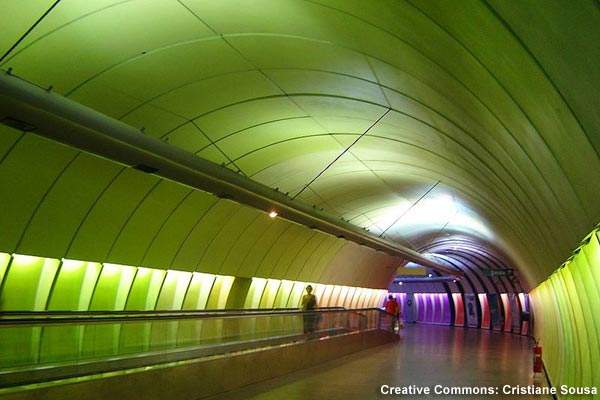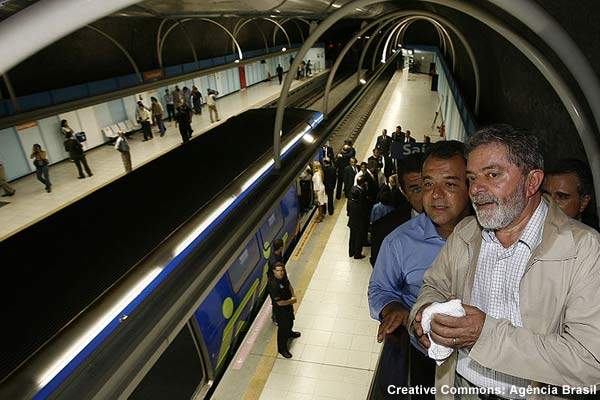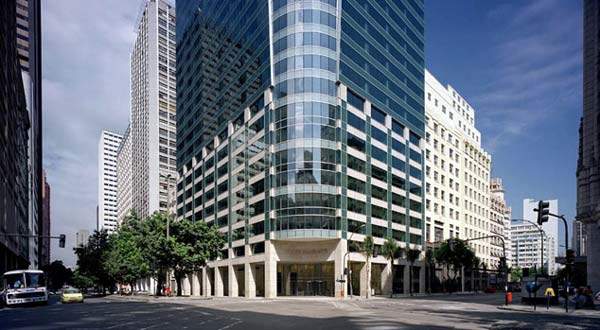Rio de Janeiro Metro, also referred to as Metro Rio, is a partially underground railway network that was launched for operations in 1979. The network has two lines and serves half a million travellers each day, about 5% of the number of passengers travelling in Rio de Janeiro.
Operated by Rio Trilhos, the metro is set to undergo an upgrade to improve and prepare the city’s transport system for the 2016 Olympic Games to be hosted by Brazil.
The upgrade will extend the 42km-long metro network towards the west of Rio de Janeiro. Due for completion by 2015, the project will cost nearly $1.31bn.
The project
The upgrade project will extend line 1 of the metro network towards Barra da Tijuca, the area where most of the Olympic venues will be located. Baraa da Tijuca will be linked with Copacabana, which will host the Olympics beach volleyball, long-distance swimming and triathlon events.
Forming a key part of a $5bn citywide transport investment, the project will integrate the major game zones and transform the city’s metro transport system. The agreement for the line expansion was signed on 16 February 2009 between the state and the city government of Rio de Janeiro.
Infrastructure
The Metro Rio network consists of 33 stations on two lines. Line one (Orange line) that runs from Saens Pena to Cantagola is completely underground. It covers 18 stations. Apart from serving Rio de Janeiro’s business centre in the south zone, the semicircular line connects a number of neighbourhoods in the northern region of the city.
Line two (Red line) that extends from Pavuna to Sao Cristovao is a diagonal line connecting 15 stations. Except for four stations including Estácio, the line is completely overground. From Pavuna to Irana, six stations are elevated, while the remainder are at grade. The line transports the working-class neighbourhoods in the city’s north zone.
Both lines are connected through Estácio station that serves as the network’s interchange station. Line 1 has two stations with island platforms. All the other stations on the line have side platforms although Saens Pena station is also equipped with two island platforms and three tracks.
Line two has most of its stations with island platforms. Some stations including Triagem are equipped with side platforms. The Maracana station on line two is linked directly to the Maracana stadium, one of the largest stadiums in the world.
Rolling stock
Both lines are served by old metro rolling stock of A TYPE. Line two includes A TYPE and the new B TYPE rolling stock. As line two is a conversion from light rail to metro, its rolling stock includes trains that have been converted from light rail to metro.
The entire rolling stock is fully air-conditioned and the trains comprise four to six passenger cars. Constructed in stainless steel, the monoblock passenger cars have the capacity to accommodate up to 378 passengers. In a typical six-passenger car train, the maximum number of passengers that can be accommodated is 2,214.
The coaches have horizontal as well as vertical seating arrangements. Where the horizontal seats, parallel to windows, are fitted on to the left side, the right side features vertical seats, right-angled to the window. This can also be vice versa.
To facilitate easier standing and backside facing, every vertical seat is equipped with a handle. Ceiling to floor vertical rods are also fixed in front of horizontal seats and in middle of the coach to assist standing passengers.
The future
The network will include a third line that will connect Carioca station on line 1 to Niteroi and Sao Goncalo. Extending 22km, this line will have an underwater tunnel and will be privately financed. The network will also consist of lines 4, 5 and 6, which are still in the planning stage.






